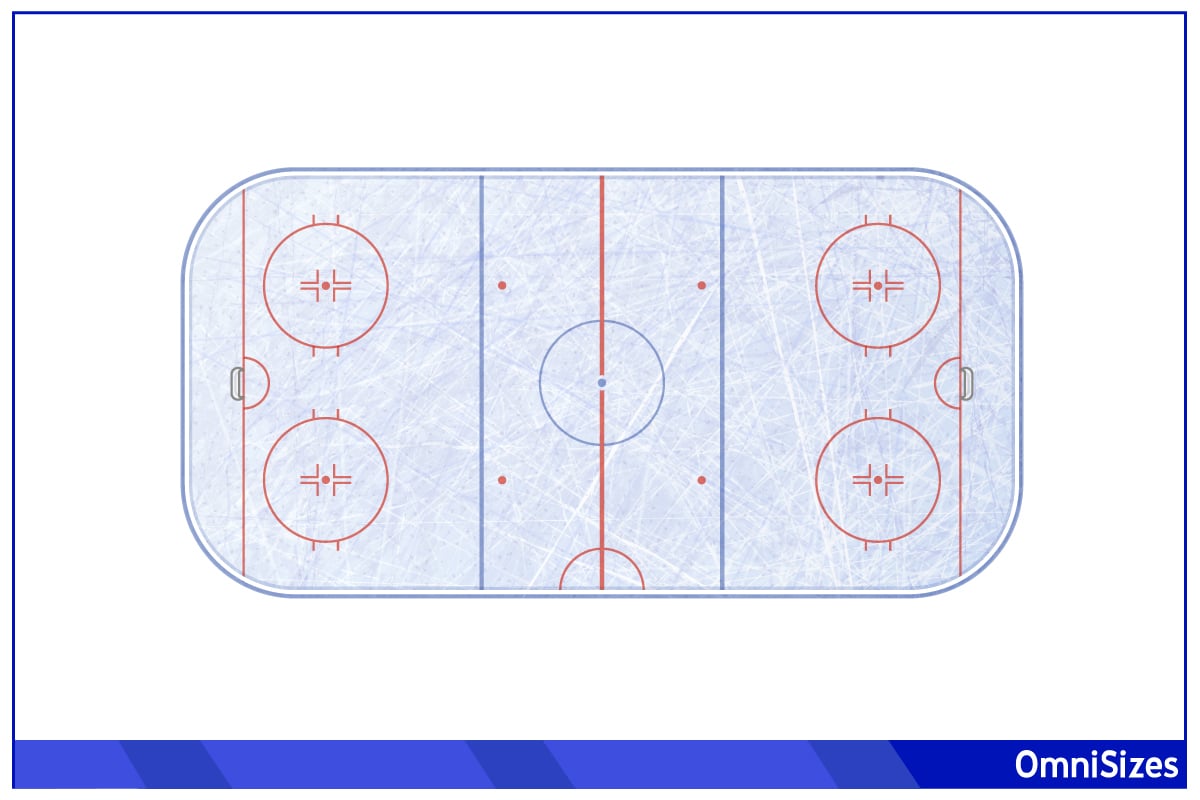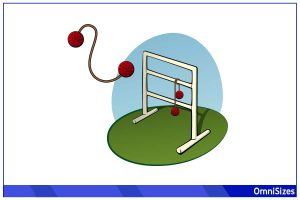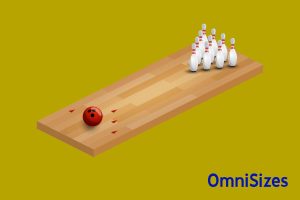Hockey is a winter-time sport where players skate and move a puck around on an ice rink. Hockey rink dimensions are a big deal because they set the stage for the game. These measurements shape the action and excitement of the sport.
The official measurements of a hockey rink vary between leagues. For instance, the National Hockey League’s guidelines state that a rink must measure 200 × 85 feet, whereas Olympic rinks can be as large as 200 × 100 ft.
This guide will describe the different standards of hockey rinks and markings, as well as compare hockey rinks to other ice sport playing areas.
Standard Dimensions of a Hockey Rink
Hockey rinks are where the magic happens, and their size matters a lot. When talking about dimensions, you need to understand that different leagues have different standards.
NHL Rink Dimensions
In the NHL, the big leagues of hockey, rinks have specific sizes. They’re 200 feet long and 85 feet wide (61 × 25.9 m). The corners are rounded at a 28-foot radius. As you’ll see, NHL rinks are smaller than their international counterparts to promote high-intensity gameplay. Basically, with a smaller area to skate and escape, players are forced to confront each other more frequently.
IIHF and Olympic Rink Dimensions
The International Ice Hockey Federation (IIHF) rinks are a bit different. Their acceptable size ranges are 197-200 feet (60-61 m) long and 95-98.4 feet (29-30 m) wide. The corner radius also ranges from 23-28 feet (7-8.5 m). These dimensions are also true for regulation gameplay in the Olympics. A larger playing field equals more space to skate and move the puck.
Ice Surface and Markings
When you watch a hockey game, you’ll notice the ice isn’t just a blank canvas. It’s got a bunch of lines and markings that guide the game and keep things organized.
1. Center Red Line
The big red line smack in the middle of the rink? That’s the center line. It divides the rink into 2 halves. It’s where the game kicks off with a face-off and plays a role in offsides and icing calls.
2. Blue Lines
The two blue lines create three zones on the rink: defensive, neutral, and offensive. They’re key in determining offsides. A player can’t enter the offensive zone before the puck does.
3. Goal Lines
At each end of the rink, you’ll find a red goal line. It marks the boundary between in play and out of play and is crucial for determining goals and icing.
4. Face-off Spots and Circles
Scattered around the ice are several face-off spots and circles. These are where players face off to start or restart play. There are two in each team’s defensive zone, 2 at each end of the neutral zone, and 1 at the center of the rink.
5. Goal Crease
In front of each goal is a blue semi-circle called the goal crease. Goalies hang out here, and opposing players can’t enter before the puck does. It’s a goalie’s safe zone.
6. Referee Crease
This small semi-circle near the timekeeper’s box is where referees go for discussions without player interference. It’s a no-player zone during these times.
7. Trapezoid Area
Behind the goals, in some leagues like the NHL, you’ll see a trapezoid. Goalies can only play the puck within this area if it’s behind the goal line.
Summary Chart
| Hockey Rink Marking | Length | Notes |
| Center Red Line | 85 feet | Divides the rink into 2 halves. |
| Blue Lines | 85 feet | Divide the rink into 3 zones. |
| Goal Lines | 11 feet | Mark the boundaries of the goals. |
| Face-off Spots | 2 feet | Located in each team’s defensive and neutral zones at the center. |
| Face-off Circles | 30 feet | Surround the face-off spots. |
| Goal Crease | 8 feet | Semi-circle in front of each goal. |
| Referee Crease | 10 feet | Small semi-circle near the timekeeper’s box. |
| Trapezoid Area | 28 feet | Behind the goals. |
Note: This table describes marking sizes per the NHL rulebook.
Comparison with Other Ice Sports Rinks
When we talk about ice rinks, hockey isn’t the only game in town. There are other ice sports, each with its own style of rink.
Hockey vs. Figure Skating Rinks
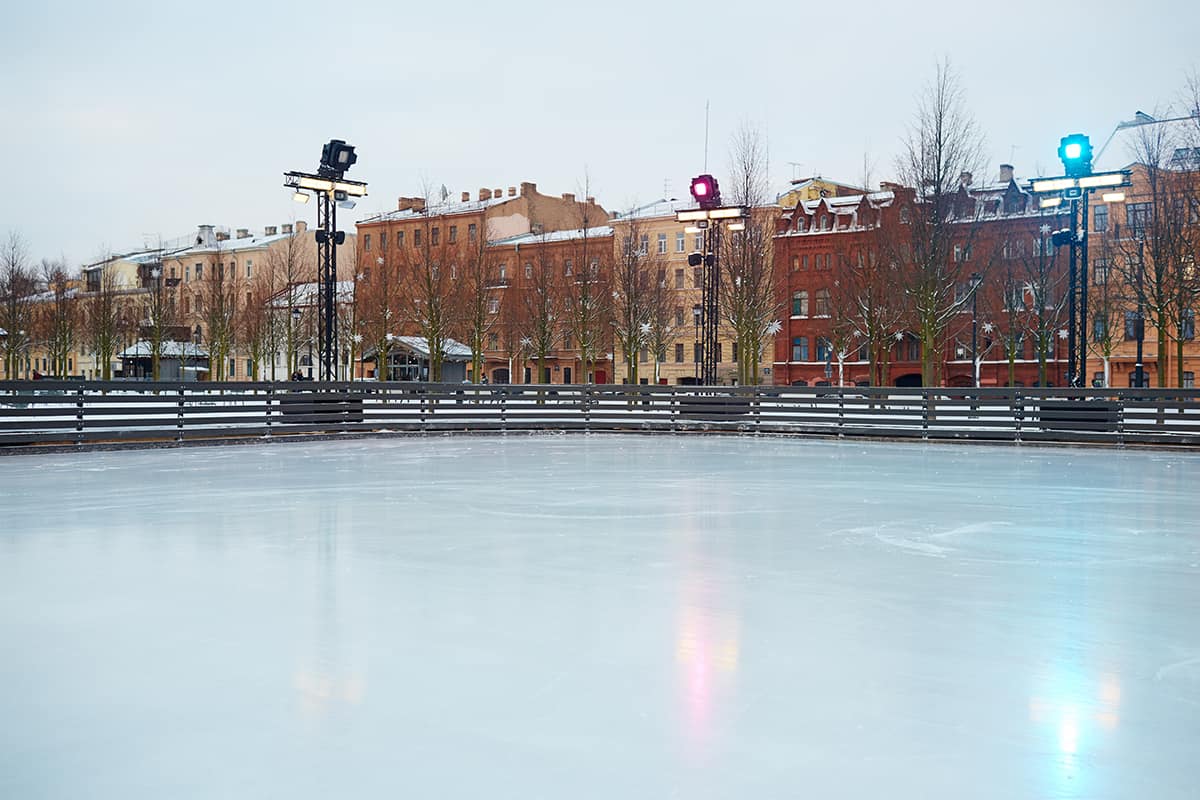
Figure skating rinks are usually the same size as international hockey rinks (60 × 30 m) per the International Skating Union. Figure skating rinks have fewer lines and markings since it’s more about grace and routines than zones and goals. The ice quality is also a bit different, smoother, catering to jumps and spins.
Hockey vs. Speed Skating Rinks
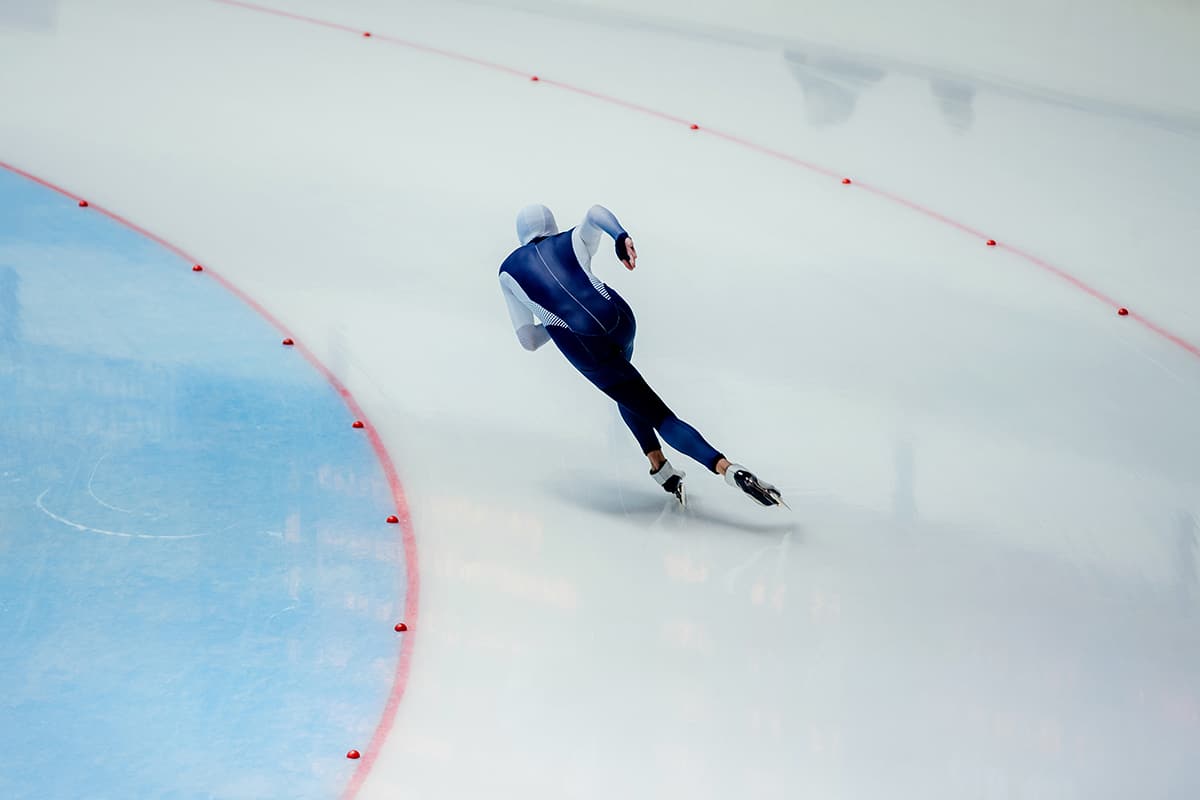
Speed skating rinks are much bigger than hockey rinks. An Olympic size speed skating rink is about 400 meters in circumference. The longer oval shape is designed for endurance and speed, a far cry from the compact, fast-paced hockey rink.
Hockey vs. Curling Sheets
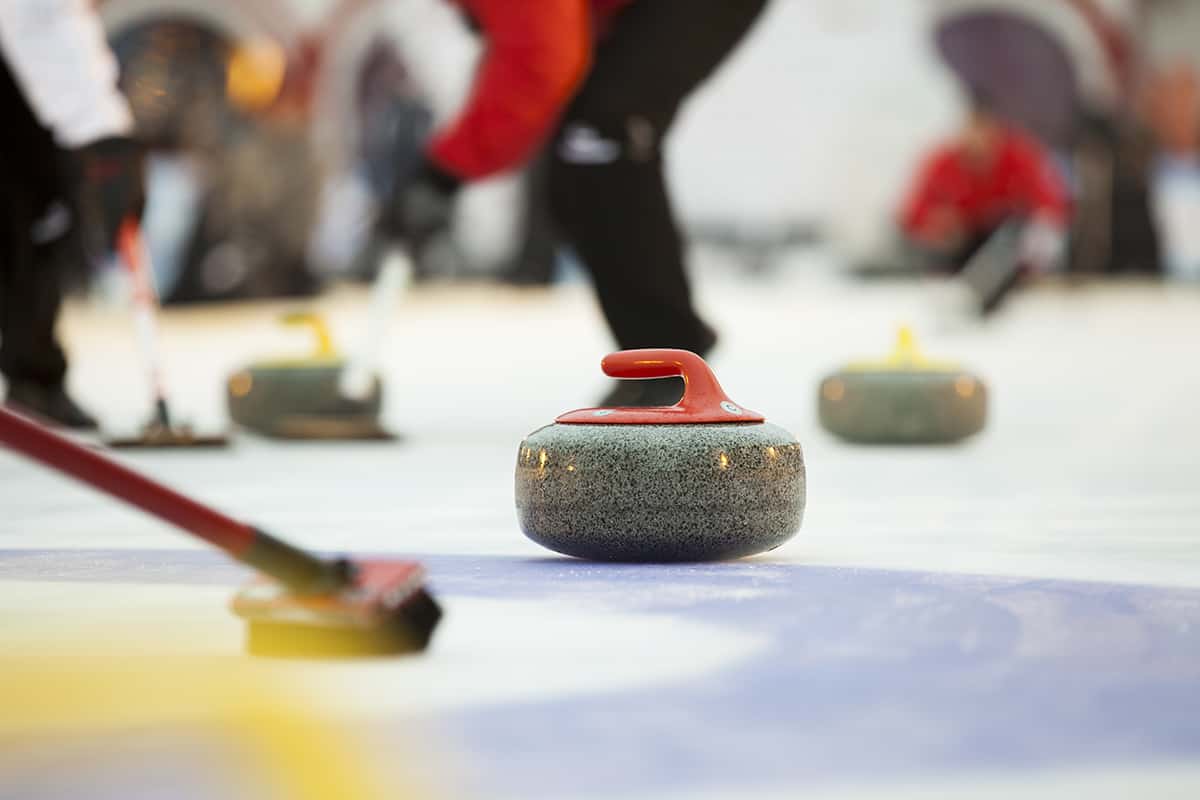
Curling happens on a ‘sheet’, not a rink, and it’s way different from hockey. A curling sheet is between 146 and 150 feet long and 14.2 and 15.7 feet wide. That’s shorter and a lot narrower than a hockey rink. The ice is ‘pebbled’ (little bumps on the surface), unlike the smooth ice of hockey rinks.
FAQs
1. What is the difference between a hockey ring and a hockey rink?
First off, there is no such thing as a “hockey ring.” A rink is the icy area on which hockey and other winter sports are played. A ring, at least in the sports world, is used to describe the canvased area where boxers and wrestlers beat each other up.
2. Why are European hockey rinks larger than NHL rinks?
European rinks, used in leagues and international play like the IIHF, are bigger because they change the game’s style. There’s more room to skate and maneuver, making it less about body checks and more about speed and skill. It’s just a different flavor of hockey.
3. How thick is the ice in a hockey rink?
The ice on a hockey rink is usually about 3/4 inch to 1 inch thick. It might seem thin, but it’s pretty tough. It has to be made just right to handle the fast-paced action of hockey games. Too thick, and it’s not as smooth; too thin, and it won’t hold up.
